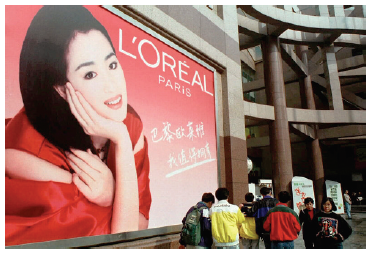1. How do womens preferences for cosmetics and beauty care vary from country to country? 2. Assess...
Question:
2. Assess Est̩e Lauder۪s strategy for China. Does it make sense to focus on premium brands, or should the company launch a mass-market brand?
3. What is the best positioning strategy for Shiseido as the company expands in Asia? High touch? High tech? Both?
4. Do you think L۪Or̩al will succeed in changing the buying habits of Brazilian women?
The world€™s best-known cosmetics companies are setting their sights on a lucrative new market segment: the emerging middle classes in countries such as Brazil, Russia, India, and China. For example, the Chinese spent $10.3 billion on cosmetics and toiletries in 2005; that figure has doubled in the last few years. Not surprisingly, marketers at L€™Oréal, Procter & Gamble, Shiseido, and Estée Lauder Companies are moving quickly. William Lauder, president and CEO of Estée Lauder, calls China a €œ$100 billion opportunity€ (see Exhibit 7-14).
Noting that there is no €œone-size-fits-all€ ideal of beauty, cosmetics marketers pride themselves on sensitivity to local cultural preferences. As Jean-Paul Agon, chief executive of L€™Oréal, explains, €œWe have different customers. Each customer is free to have her own aspirations. Our intention is just to respond as well as possible to each customer aspiration. Some want to be gorgeous, some want to be natural, and we just have to offer them the best quality and the best product to satisfy their wishes and their dreams.€ For example, many Asian women use whitening creams to lighten and brighten their complexions; in China, white skin is associated with wealth. L€™Oréal responded by creating White Perfect; Shiseido offers Aupres White.
€œyou can€™t just import cosmetics here. companies have to understand what beauty means to chinese women and what they look for, and product offerings and communication have to be adjusted accordingly. it€™s a lot harder than selling shampoo or skin care.€
Market research is critical to understanding women€™s preferences in different parts of the world. According to Eric Bone, head of L€™Oréal€™s Tokyo Research Center, €œJapanese women prefer to use a compact foundation rather than a liquid. Humidity here is much higher and the emphasis is on long-lasting coverage.€ Armed with this knowledge, L€™Oréal devotes more development time to compacts rather than liquids. The researchers have also learned that the typical Japanese woman cleanses her face twice a day.
In China, L€™Oréal and its competitors have an opportunity to educate women about cosmetics, which were banned prior to 1982. Each year, L€™Oréal observes and films 6,000 Chinese women applying and removing makeup. Alice Laurent, L€™Oréal€™s skin-care development manager in Shanghai, says, €œIn China, the number of products used in the morning and the evening is 2.2.€ At its Shanghai Innovation Centre, L€™Oréal is also studying how to incorporate traditional Chinese medicine into new product lines.
L۪Or̩al offers a wide range of products in China, including both mass-market and premium brands. The company pursues a localization product strategy, with more than 80 percent of its Asian products developed specifically for the region. L۪Or̩al۪s Lanc̫me luxury brand is typically sold in exclusive shopping districts that have upscale shops and luxury malls. L۪Or̩al has also capitalized on the opportunity to target a new demographic: Chinese men. The Chinese market for men۪s skin-care products is growing much faster than the market for women۪s skin care. Many of the purchases are made by women during shopping trips when couples go out together. Increasing numbers of Chinese men view appearance as a key to success, with skin-care products playing an important role in male grooming.
Exhibit 7-14

Step by Step Answer:






